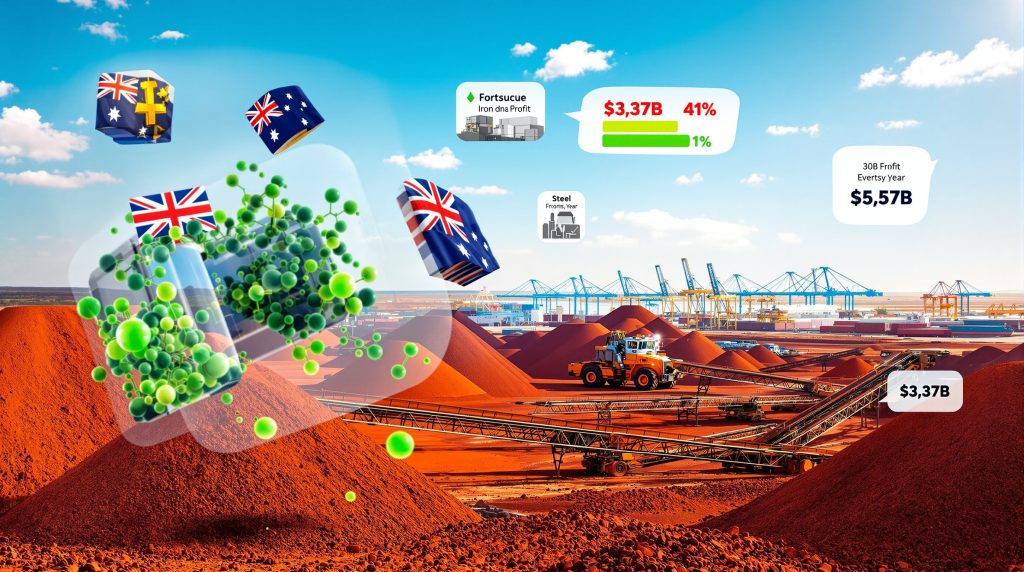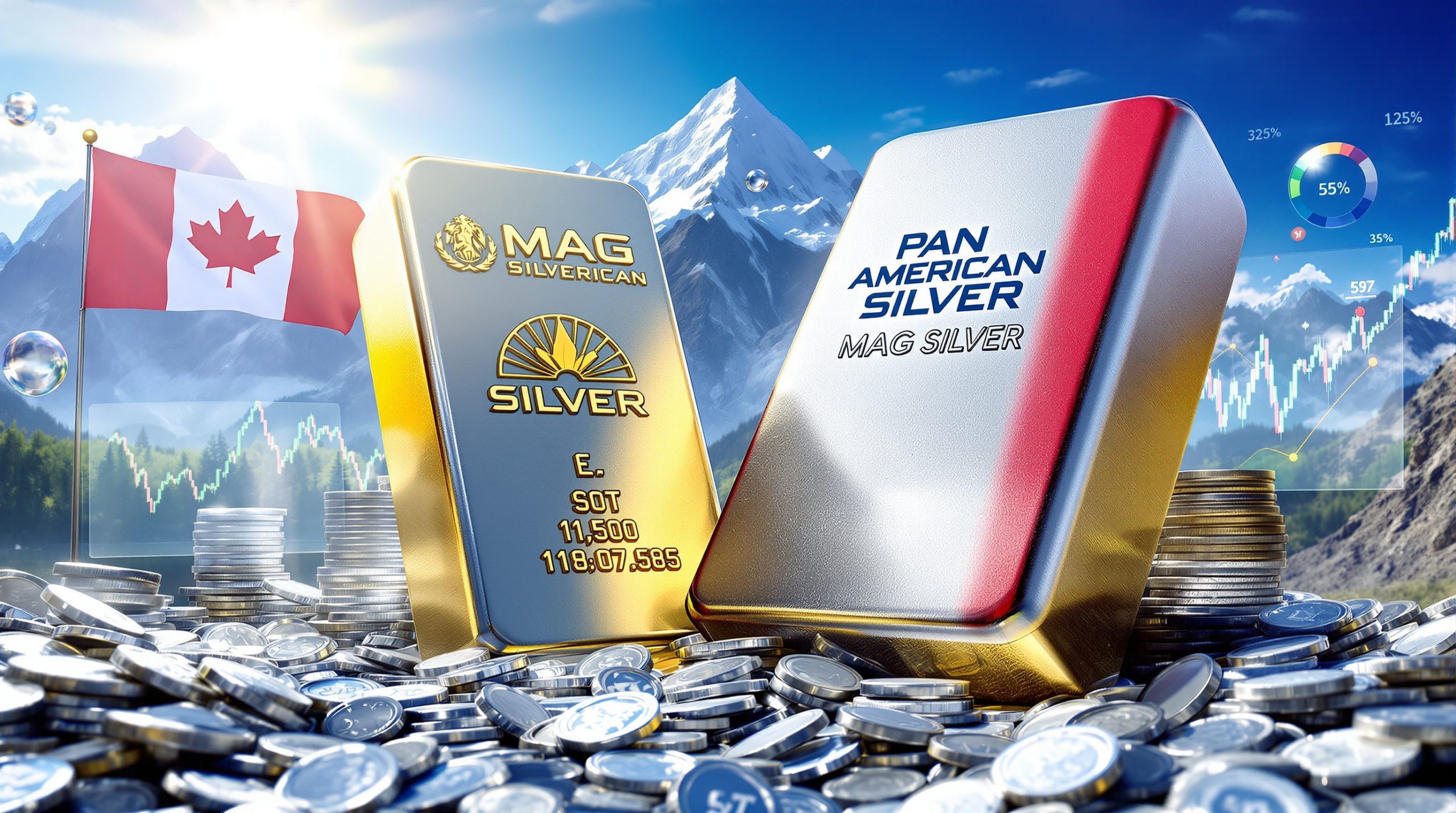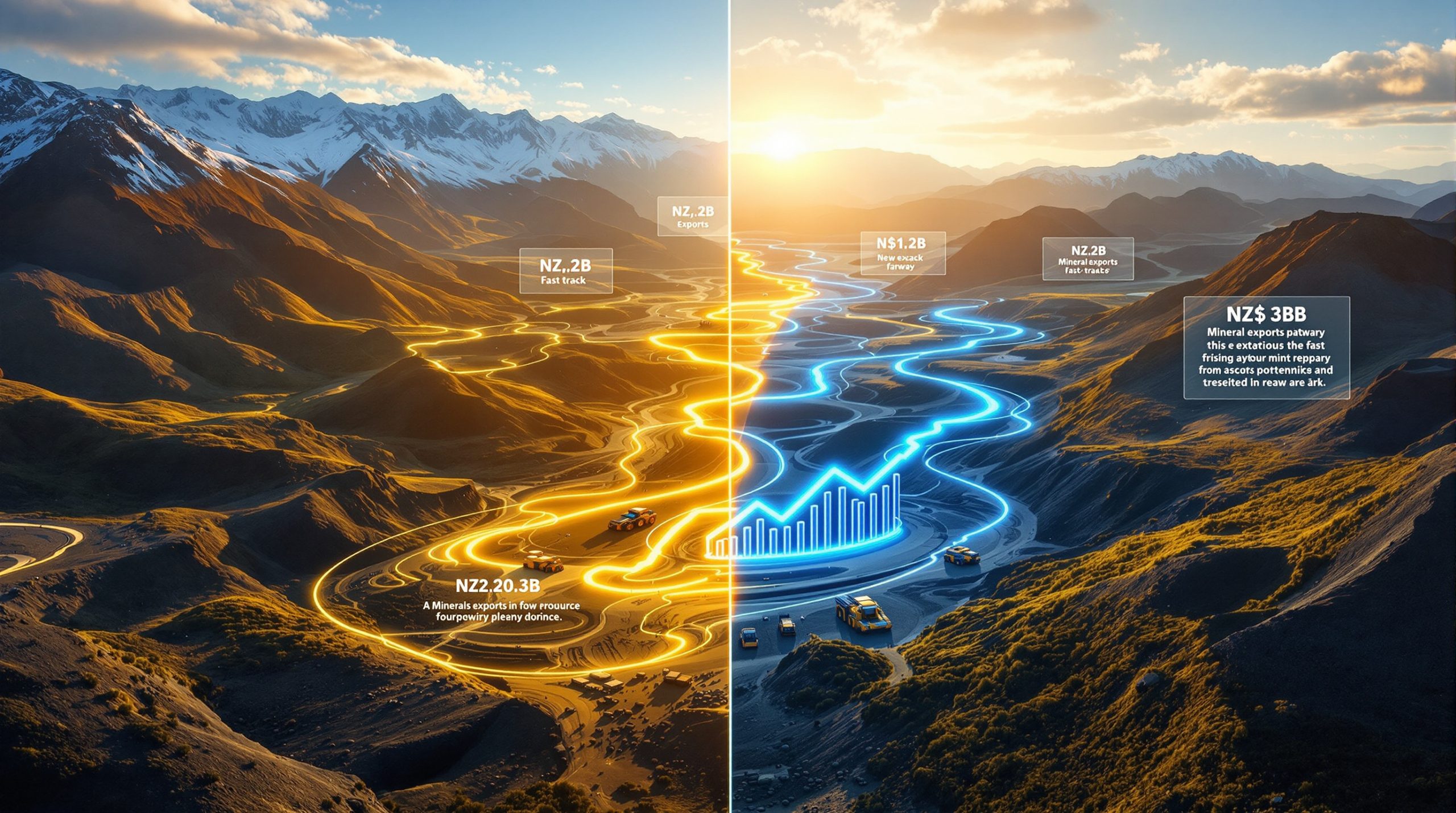Fortescue's FY25 Financial Results: Market Implications and Strategic Outlook
Fortescue Metals Group delivered mixed financial results for FY25, with net profit after tax falling 41% to US$3.37 billion compared to US$5.68 billion in the previous fiscal year. This represents the company's weakest profit performance in six years, primarily driven by softer iron ore price trends rather than operational issues. Revenue declined approximately 15% to US$15.5 billion, while underlying EBITDA decreased 26% to US$7.94 billion.
The EBITDA margin contracted significantly from 59% to 51%, highlighting the direct impact of weaker realized prices on profitability. This margin compression demonstrates that while Fortescue maintains strong operational control, it remains vulnerable to broader commodity market cycles.
Dividend and balance sheet position
The dividend payout reflected the challenging earnings environment, with a final dividend of A$0.60 per share bringing the total annual dividend to A$1.10 – the lowest since 2018. Despite maintaining a consistent payout ratio of approximately 65%, the reduced per-share returns may concern income-focused investors.
The company's balance sheet remains robust with US$4.3 billion in cash reserves and net debt reduced to just US$1.1 billion, providing financial flexibility during this cyclical downturn. Fortescue's cost discipline continues to be a competitive advantage, with Hematite C1 costs at US$17.99 per wet metric tonne, positioning the company firmly in the lowest quartile of global producers.
What drove record shipments despite market challenges?
Despite price pressures, Fortescue achieved record iron ore shipments of 198.4 million tonnes in FY25, representing a 4% year-on-year increase. This operational achievement underscores the company's production capabilities and efficiency even in a softer market environment. For FY26, management has provided guidance of 195-205 million tonnes, with the Iron Bridge magnetite project expected to contribute 10-12 million tonnes.
Operational excellence amid market headwinds
The record shipment volumes highlight that while demand may be softening, it hasn't collapsed entirely. Fortescue successfully moved nearly 200 million tonnes in FY25, indicating that Chinese buyers continue to purchase cargoes even at lower price points. This operational resilience provides some underlying support for the iron ore market in the near term.
However, the significant drop in realized pricing tells the other side of the story. Average revenue per tonne fell nearly 20% year-on-year, demonstrating how difficult it is for producers to maintain margins when supply is abundant and buyers have increased leverage in negotiations.
What's happening with iron ore prices in 2025?
The iron ore market in 2025 has experienced considerable volatility with a downward trend. Fortescue's realized prices for hematite averaged US$85 per tonne during FY25, a significant reduction from US$103 in the previous year. This iron ore price decline reflects both market oversupply conditions and weakening Chinese demand.
China's property sector impact on steel demand
China's struggling property market continues to be the single largest risk factor affecting global steel demand and, consequently, iron ore prices. The ongoing challenges in China's real estate sector, characterized by high debt levels, weak sales, and declining new construction, have suppressed steel production and reduced demand for imported iron ore.
This raises a fundamental question for investors: Is the current weakness cyclical or structural? If Chinese demand is facing structural pressure rather than temporary cyclical factors, the iron ore boom that characterized the past decade may not return in the same form.
Supply dynamics creating market imbalance
Supply-side factors have also contributed significantly to price pressure. Brazilian producer Vale has restored much of its previously lost output following earlier operational disruptions. Meanwhile, other major Pilbara producers including BHP and Rio Tinto have maintained strong production levels. This surge in supply into an already soft demand environment has created favorable conditions for buyers, pushing prices lower.
Market sentiment regarding China has fluctuated between optimism about potential government stimulus measures and ongoing concerns about the real estate sector's health. Fortescue's results provide investors with direct insight into the current state of Chinese demand and the extent of market oversupply.
How is Fortescue balancing traditional operations with green initiatives?
Fortescue is navigating a strategic balancing act between maintaining its core iron ore business and advancing its decarbonization ambitions. This dual approach involves expanding shipments while carefully evaluating the economic viability of its hydrogen projects.
Strategic capital allocation and project reassessment
The company's capital expenditure for FY25 totaled US$3.9 billion, with FY26 guidance set at US$3.3-4.0 billion for metals operations and an additional US$300 million allocated for energy initiatives. In a notable strategic shift, Fortescue canceled hydrogen projects in Arizona and Gladstone, resulting in a US$150 million writedown. This decision reflects a more disciplined approach to capital allocation amid uncertain project economics.
Commitment to green hydrogen and decarbonized steel
Despite scaling back some projects, Fortescue has reaffirmed its long-term commitment to green hydrogen and green iron initiatives. The company's pilot plant, which aims to utilize hydrogen instead of coal in steelmaking processes, has been delayed until 2026. Fortescue maintains its target of achieving net zero operational emissions by 2030, with up to US$1.2 billion earmarked for energy transition spending in FY26.
This strategic positioning shows Fortescue's attempt to hedge against future shifts in iron ore demand insights while developing potential new growth engines, even as near-term execution risks remain substantial.
What are the key risks for Fortescue in FY26?
Investors need to monitor several critical risk factors emerging from these results. The most significant remains the outlook for China's steel demand. With the Chinese property market continuing to struggle with high debt levels, weak sales, and declining new construction, Beijing's ability to effectively stimulate demand will be crucial. If stimulus measures prove ineffective, iron ore consumption could remain subdued for an extended period.
Price volatility and policy sensitivity
Another major risk is price volatility in the iron ore market. While cyclicality has always been a feature of commodity markets, the iron ore sector has become increasingly sensitive to policy signals from Beijing in recent years. Minor changes in stimulus announcements or environmental restrictions on steel production can trigger price swings of 10-15% within weeks, requiring investors to prepare for continued volatility.
Execution challenges in green technology transition
Fortescue also faces execution risks in its green energy pivot. The cancellation of projects in the United States and Australia highlights the economic challenges of making green hydrogen commercially viable. Delays to the green iron pilot project indicate that technological and cost hurdles remain significant. If these initiatives fail to generate competitive returns, investors could see years of capital expenditure with limited financial payoff.
Additional external factors including ESG pressures and currency fluctuations will continue to influence performance. The Australian dollar's movements against the US dollar can impact realized revenues, while increasing scrutiny over Fortescue's ESG performance could affect both corporate reputation and access to capital markets.
What should investors consider when evaluating Fortescue's outlook?
For bullish investors, Fortescue presents a compelling investment case despite recent challenges. The company's record shipments, lowest-quartile production costs, and resilient balance sheet position it to weather market downturns better than many competitors. While reduced, the dividend still offers an attractive yield compared to many other sectors on the ASX. If iron ore prices stabilize around current levels and China's stimulus measures begin to take effect, Fortescue shares could experience a strong rebound.
Balancing cyclical risks against long-term potential
The bearish perspective, however, deserves equal consideration. Iron ore remains a cyclical commodity, and China's property sector continues to exert structural pressure on steel demand. With profits down more than 40% in a single year, further weakness cannot be ruled out. Additionally, the company's strategic pivot toward green hydrogen and green iron adds complexity and execution risk to the investment thesis. Income-focused investors may be disappointed by lower dividends, while growth investors may find the payoff from green projects too distant to justify current valuations.
Long-term strategic positioning
Fortescue's FY25 results reinforce a fundamental reality: iron ore remains the company's core business, but the long-term narrative is increasingly shifting toward decarbonized steel production and renewable energy. The success of Fortescue's transition between these two business models will likely determine its performance over the coming decade. For now, the stock serves as a barometer for both commodity cycles and the global energy transition.
How does Fortescue's performance reflect broader iron ore market trends?
Fortescue's results provide valuable insights into the broader iron ore market dynamics. The company's ability to maintain record shipment volumes indicates that demand, while softened, hasn't collapsed entirely. Chinese steel mills continue to purchase iron ore, albeit at lower prices that reflect their increased negotiating leverage.
Market supply-demand imbalance
The significant drop in realized prices – from US$103 to US$85 per tonne – highlights the current supply-demand imbalance in the market. Major producers including Vale, BHP, and Rio Tinto have all maintained strong output levels despite weaker pricing, creating oversupply conditions that favor buyers. This market dynamic has compressed margins across the industry, with Fortescue's EBITDA margin contracting from 59% to 51%.
Strategic industry responses
Fortescue's strategic response to these market conditions – maintaining operational excellence while carefully evaluating capital investments – reflects broader industry trends. Major iron ore producers are focusing on cost leadership and operational efficiency while exploring diversification opportunities. Fortescue's green hydrogen and green iron initiatives represent one approach to future-proofing the business against potential structural changes in iron ore demand.
What questions remain about China's steel demand trajectory?
China's steel demand remains the single most important driver for iron ore markets. Fortescue's results raise several critical questions about the trajectory of this demand. The property sector's continued weakness suggests structural rather than cyclical challenges, potentially signaling a permanent shift in China's steel consumption patterns.
Infrastructure spending versus property construction
While China's property sector struggles, infrastructure spending could partially offset declining construction-related steel demand. Government stimulus measures focused on infrastructure development might provide some support for steel consumption, though likely not enough to fully compensate for the property downturn. Investors should monitor the balance between these two demand drivers when assessing future iron ore price forecast movements.
Steel industry decarbonization impacts
China's steel industry is also facing increasing pressure to reduce carbon emissions, which could influence both production methods and overall output levels. Fortescue's investments in green iron technology align with this trend, potentially positioning the company to benefit from the industry's mining sustainability transformation. However, the transition timeline remains uncertain, creating both opportunities and risks for iron ore producers.
How will Fortescue's green energy investments impact future returns?
Fortescue's strategic pivot toward green hydrogen and decarbonized steel production represents both a hedge against declining iron ore demand and a potential new growth engine. However, the financial implications of this transition remain uncertain.
Capital allocation trade-offs
The company's decision to allocate significant capital to green energy initiatives – up to US$1.2 billion in FY26 – represents resources that could otherwise be returned to shareholders or invested in core operations. This creates a near-term trade-off between maximizing current returns and positioning for future growth. Investors with different time horizons may view this trade-off differently.
First-mover advantages versus execution risks
As one of the first major mining companies to aggressively pursue green hydrogen and decarbonized steel production, Fortescue could potentially secure first-mover advantages in these emerging markets. However, being a pioneer also entails greater execution risks, as demonstrated by the project cancellations and writedowns in FY25. The balance between these potential advantages and risks will significantly influence Fortescue's long-term value proposition.
Frequently Asked Questions
What caused Fortescue's profit to drop in FY25?
Fortescue's profit declined 41% to US$3.37 billion primarily due to lower iron ore prices, which averaged US$85 per tonne compared to US$103 in the previous year. This price weakness reflected both oversupply conditions and softening Chinese steel demand, particularly in the property sector. Despite achieving record shipments of 198.4 million tonnes, the company couldn't offset the impact of lower realized prices on its margins.
Is Fortescue still committed to green hydrogen after recent project cancellations?
Yes, despite canceling projects in Arizona and Gladstone (resulting in a US$150 million writedown), Fortescue has reaffirmed its long-term commitment to green hydrogen and green iron initiatives. The company has delayed its pilot plant for hydrogen-based steelmaking until 2026 but maintains its target of achieving net zero operational emissions by 2030. Fortescue has allocated up to US$1.2 billion for energy transition spending in FY26, demonstrating continued investment in decarbonization technologies.
How dependent is Fortescue on China's steel industry?
Fortescue remains highly dependent on China's steel industry, which continues to be the primary market for its iron ore exports. The company's financial performance is directly linked to Chinese steel production levels and, by extension, to China's property and infrastructure sectors. This dependency explains why Fortescue's profits are so sensitive to changes in Chinese economic policy and construction activity. The company's green energy initiatives represent a partial attempt to diversify beyond this dependency in the longer term.
What is Fortescue's dividend outlook for FY26?
While Fortescue hasn't provided specific dividend guidance for FY26, the company maintained its payout ratio at approximately 65% despite lower earnings in FY25. If this policy continues, future dividends will primarily depend on iron ore price movements and their impact on profitability. Investors should note that the total dividend for FY25 was A$1.10 per share, the lowest since 2018, reflecting the challenging market conditions. Any recovery in iron ore prices could lead to improved dividend payments in FY26.
How competitive is Fortescue's cost position compared to other major iron ore producers?
Fortescue maintains a highly competitive cost position with Hematite C1 costs at US$17.99 per wet metric tonne, placing it firmly in the lowest quartile of global producers. This cost leadership provides crucial protection during price downturns and helps maintain positive cash flow even in challenging market conditions. While all major producers focus on cost efficiency, Fortescue's consistent performance in this area represents a key competitive advantage and supports its resilience through market cycles.
Ready to Identify the Next Major Mineral Discovery?
Discover significant ASX mineral discoveries the moment they're announced with Discovery Alert's proprietary Discovery IQ model, turning complex data into actionable investment insights. Explore why major discoveries can lead to substantial returns by visiting our dedicated discoveries page and begin your 30-day free trial today to position yourself ahead of the market.




